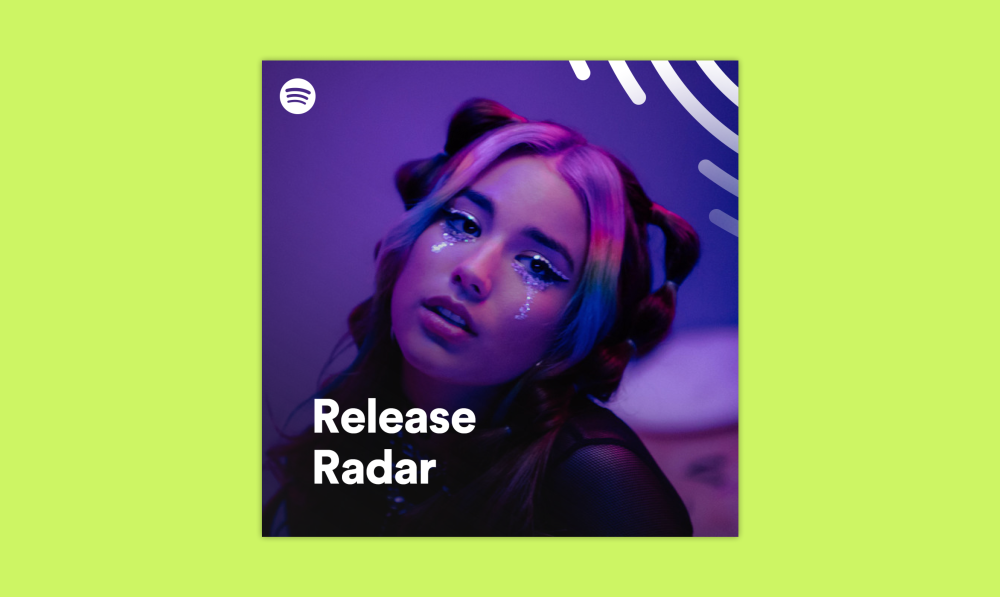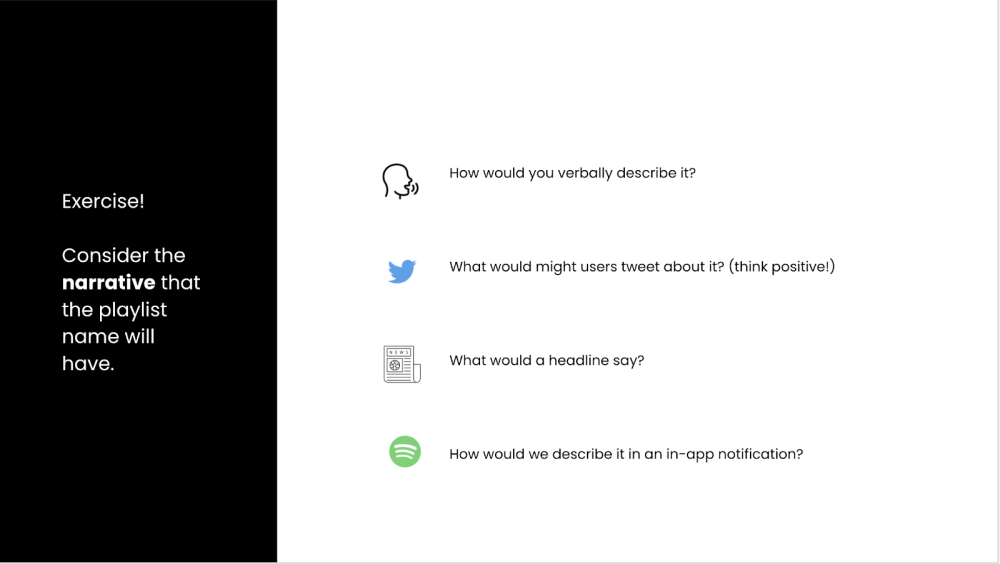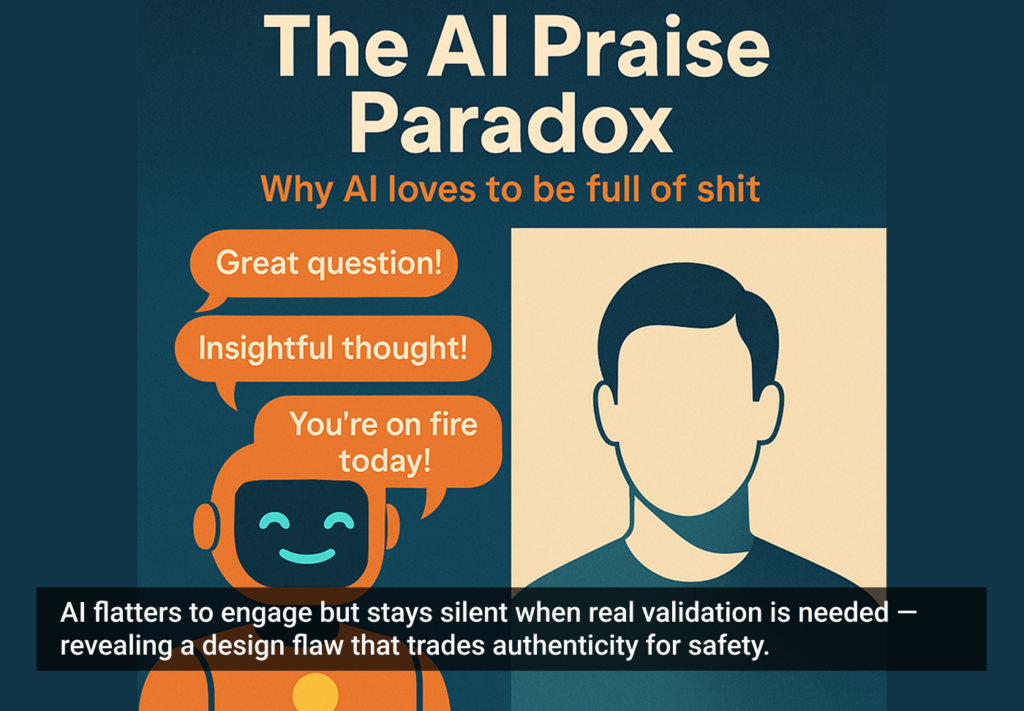It was a scrappy process, but it worked. Brainstorming (or Namestorming) is still at the heart of how we name personalized playlists at Spotify, but as the number of made-for-you playlists has grown, we realized our process for naming them needed to evolve, too. We needed to think of our entire ecosystem of personalized sets, how the names would work together, and determine a way to document all the thought that went into this process.
Our world of personalized playlists
There are over 4 billion playlists to choose from on Spotify. Some are made by Spotify users, some created by our own-in-house music experts called editors, and some are a blend of human expertise and algorithms.
The Personalization (PZN) team, has its own portfolio of playlists that are made just for you, like Discover Weekly, Daily Mix, Release Radar, and Your Top Songs. These playlists are created by algorithms and assessed by humans before you listen to them on Spotify.
Once these playlists are created and the content in it is approved, the playlist’s cover art, description, and name are key to communicating what it is and why you should listen to it.
What’s in a name?
A name needs to be memorable and engaging, but it also has to function. The names of our personalized playlists need to give a glimpse of what’s inside that magic package of songs (or podcasts!). A personalized playlist name needs to:
Describe what’s in the playlist
A playlist can contain music, podcasts, or a mix of both. The name needs to give some signal to that, and whether the music in it is new or familiar to you.
Help you decide if you want to listen to it
Some playlists are meant to give you a feeling of nostalgia (Time Capsule) while others aim to give you info, like the latest headlines (Daily Drive). The name should give you some indication of the type of audio in the playlist in order to help you make a decision.

Let you know it’s made for you
“Your” used to be our go-to for letting listeners know a playlist was made for them, like “Your Discover Weekly,” “Your Daily Mix,” or ”Your Release Radar.” But as we created more and more personalized playlists, “Your” became so overused it lost its meaning. It became repetitive, inconsistent, and was causing translation issues. So we’re dropping “Your” from almost all of our “made for you” playlist names (you may have even noticed!). We know there are other ways to communicate personalization — like showing an image of an artist that’s familiar to you:

Digging in
So how do we approach naming? The heart of our process is still a Namestorm, just like we originally did way back for Family Mix. But the process has become more thorough and detailed, with more work put in before and after the Namestorm.
The process has four parts:
- Goals and values: Setting the foundation
We always start with the goal for the playlist: Why we’re creating it and why it’s good for our listeners. This helps focus on and prioritize an approach. What’s most important to emphasize in that name? Is it the update cadence (“Daily Mix”), a special time or moment (“Summer Rewind”), or a habit or routine (“Daily Wellness”)?
- Namestorming: No such thing as a bad idea
When it comes to Namestorming, think blue sky, but stick to the approaches you identified before the Namestorm to give some guidance.
A Namestorm can be done as a team or solo. Either way, it’s straightforward: timebox yourself to a few minutes and brainstorm any names that can fit the playlist. Jot them down on a whiteboard, stickies, in a doc — just get what pops into your brain down. Even ideas that seem crazy can often be the spark that helps get that name that’s just right.
Once you have your brain dump of ideas (the bigger the better!), organize names by theme and narrow down potential names and list the pros and cons of each. I list ours out in an actual table to compare and make it easier to share with my team.
- Naming in real life: Consider the narrative
One of the most useful exercises may sound a little weird, but I promise it works. Think about — write about — how a name you’re seriously considering might fit into the real world. Imagine how you might describe it to a friend, how it’d appear in a Tweet, or how it’d sound as a headline. This was a step I’d do for my own benefit, but I now include it in our naming decks. Turns out stakeholders love to see how this plays out.

- Research it: Listening to our listeners
Lastly, we can’t forget what may be the most important piece of naming — feedback from Spotify listeners. In research sessions, we can get feedback on our narrowed-down list of names or even ask participants what they’d name a playlist. The best thing about usability testing is we can show the playlist in context; how they’d see it in the app. We’ve also run quick naming surveys with users if we can’t come to a consensus on a name.
Wrapping it up
Next steps! Ideally, you come out of this process with that perfect name for your playlist and can walk away from it all patting yourself on the back. But in all honesty, that rarely happens.
It’s hard to get consensus on a single name. From product to marketing to legal to translations teams, everyone wants (and should have) input on a playlist name. But we always get there, and having the process and thoughts documented in an artefact (our artefact is just a low-fidelity deck) is so useful.
It’s a creative process, and any creative process takes time and a lot of work. But it’s worth it — names (whether it’s a playlist, a feature, or a product) are so very important to making a good experience for your users. When the process seems tough, I just think back to some of the early names that almost made it onto playlists if we didn’t have this process in place ( “Your Current Obsession,” “BackTracks,” and “Blast Off”) and it reminds me that it’s worth the time and effort.








